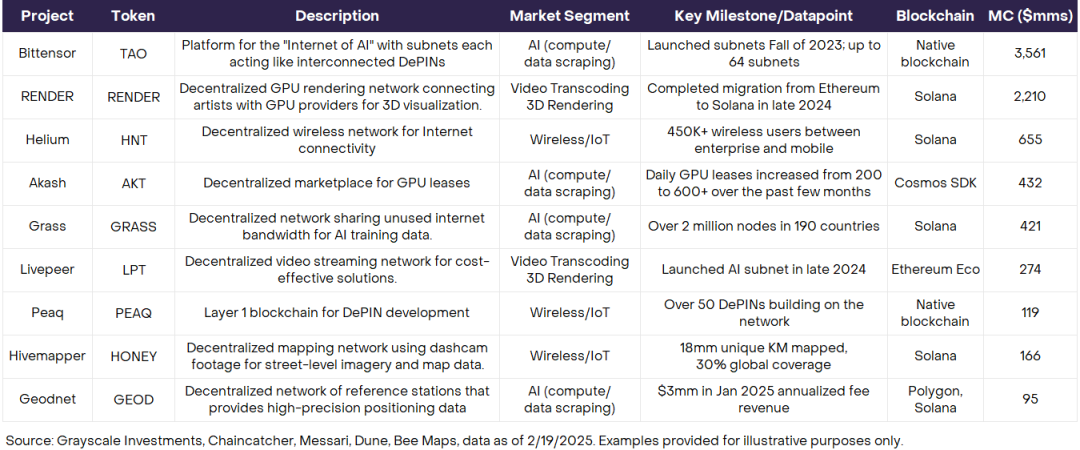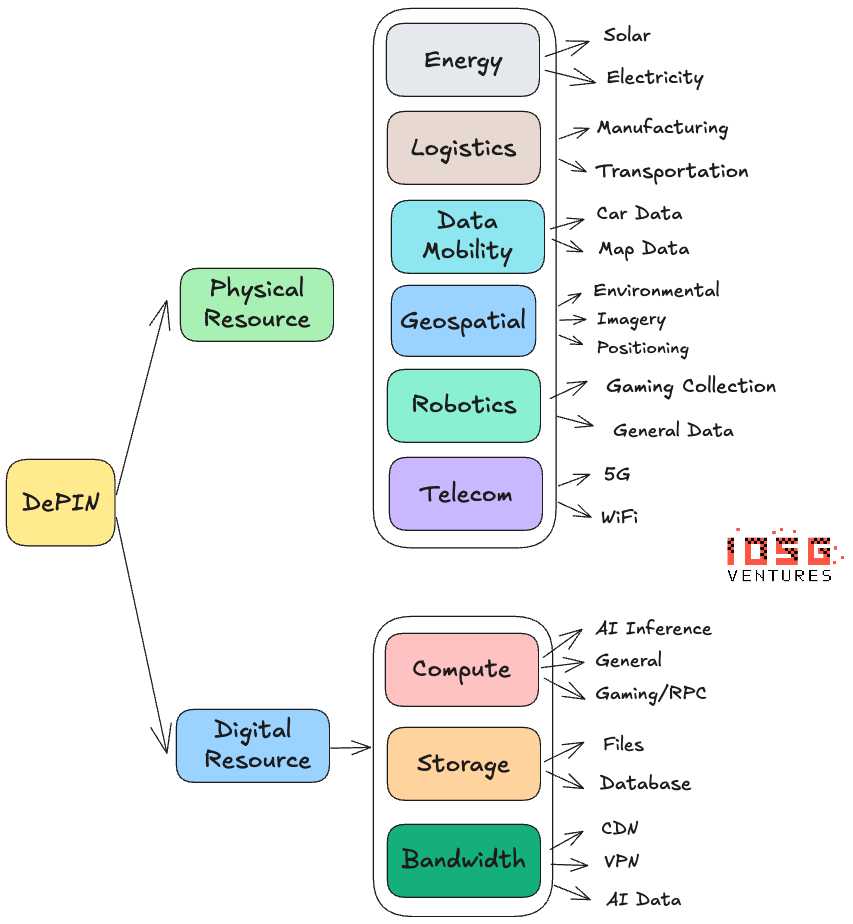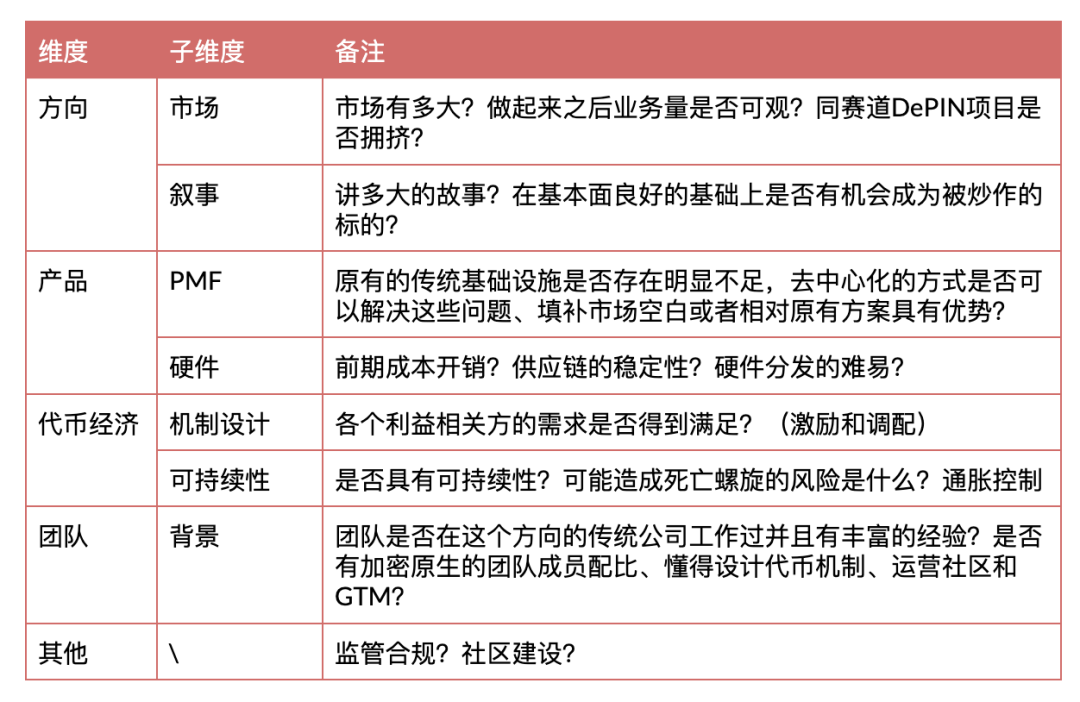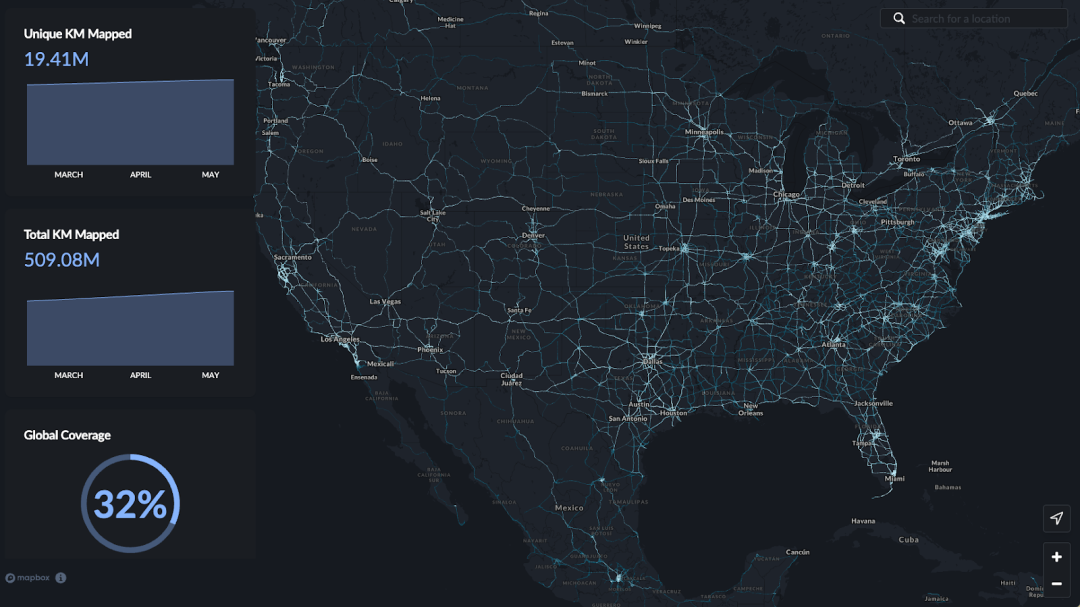Author: Jiawei @IOSG

▲ Source: Grayscale
Grayscale wrote a research report on DePIN at the beginning of this year. The table above shows the top DePIN projects and their market value. Since 2022, DePIN and AI have been mentioned as two new directions for Crypto investment. However, there seems to be no iconic project in the DePIN field. (Helium is considered a top project, but Helium appeared even earlier than the concept of DePIN; Bittensor, Render, and Akash in the table are more classified as AI tracks)
It seems that DePIN does not have a strong enough leading project to open the ceiling of this track. The DePIN track may still have some Alpha in the next 1-3 years.
This article attempts to sort out the investment logic of DePIN from scratch, including why DePIN is an investment track worthy of our attention, and proposes a simple analysis framework. Since DePIN is a comprehensive concept covering many diverse sub-tracks, this article will zoom out a little and explain the concept from an abstract perspective, but will still give some specific examples.

Why pay attention to DePIN investment
DePIN is not a buzz word
First of all, it is important to make it clear that decentralizing the infrastructure of the physical world is not a fancy idea, nor is it just a simple "narrative play", but it can be implemented. In DePIN, there are indeed scenarios where decentralization can "enable" something or "optimize" something.
Here are two simple examples:

▲ Source: IOSG
In the telecommunications field, a major track in DePIN, taking the US market as an example, traditional communication operators (such as AT&T and T-Mobile) often need to invest billions of dollars in spectrum license auctions and base station deployment, and then pay $200,000 to $500,000 in deployment costs for each macro base station with a coverage radius of 1-3 kilometers. In an auction of 5G spectrum in the 3.45GHz band by the Federal Communications Commission (FCC) in 2022, AT&T invested $9 billion, becoming the operator with the highest investment. This centralized infrastructure model leads to high prices for communication services.
Helium Mobile, through community crowdsourcing, spreads this early cost to each user. Individuals only need to purchase a hotspot device for $249 or $499 to access the network and become a "micro-operator". Through token incentives, the community can spontaneously build a network, thereby reducing overall investment. The cost of deploying a macro base station for Verizon is about $200,000, while Helium can achieve similar coverage by deploying about 100 hotspot devices (total cost of about $50,000), reducing costs by about 75%.
In addition, in the field of AI data, traditional AI companies need to pay up to $300 million per year in API fees to platforms such as Reddit and Twitter to obtain training data, and crawl data with the help of Bright Data (residential agent) and Oxylabs (data center agent). Not only that, they are also facing more and more copyright and technical restrictions, and the compliance and diversity of data sources are difficult to guarantee.
Grass has solved this dilemma through distributed Web Scraping, allowing users to share idle bandwidth by downloading browser extensions, helping to crawl public web page data and receive token rewards from it. This model greatly reduces the data acquisition costs of AI companies while achieving data diversity and geographical distribution. According to Grass statistics, there are currently 109,755,404 IP addresses from 190 countries participating in the network, contributing an average of 1,000 TB of Internet data per day.
In summary, the basic starting point for investing in DePIN is that decentralized physical infrastructure has the opportunity to do better than traditional physical infrastructure, and even do things that traditional methods cannot do.
As the intersection of Infra and Consumer
As the two main lines of Crypto investment, Infra and Consumer each face some problems.
Infra projects generally have two characteristics: First, they are very technical. For example, technologies such as ZK, FHE, and MPC have very high barriers to entry, and there is a certain disconnect in market perception. Second, except for the familiar Layer1/2, cross-chain bridges, pledges and other projects that can directly reach end users, most Infra are actually toB. For example, developer tools, data availability layers, oracles, coprocessors, etc. are relatively far away from users.
These two points make it difficult for Infra projects to promote users’ mindshare and have poor dissemination. Although high-quality Infra has a certain PMF and income and can be self-sufficient through the cycle, in a market where attention is scarce, the lack of mindshare makes it difficult to list in the later stage.
On the other hand, Consumer is directly facing end users and has a natural advantage in capturing mindshare. However, new concepts can be easily falsified by the market, and may even plummet after the hotspot switches. Such projects often fall into a cycle from narrative-driven to short-term explosion, and then to falsification and decline, and have a short life cycle. Examples include friend.tech and Farcaster, etc.
Growth, mindshare, and coin listing are all issues that have been discussed a lot in this cycle. Overall, DePIN can better solve the above two dilemmas and find a balance point.
- DePIN is based on the real needs of the physical world, such as energy, wireless networks, etc. High-quality DePIN projects have solid PMF and revenue, are not easy to be falsified, and are easy to be understood by the market. For example, Helium's unlimited data package of $30 per month is obviously cheaper than the plans provided by traditional operators.
- DePIN also has user-side usage needs and can capture mindshare. For example, users can download Grass' browser plug-in to contribute their idle bandwidth. Currently, Grass has reached 2.5 million terminal users, and many of them are non-encrypted native users. The same is true for other tracks such as eSIM, WiFi, and in-vehicle data, which are very close to users.

DePIN Investment Framework

▲ Source: Messari, IOSG

direction
Just intuitively, 5G and wireless networks are large markets, while in-vehicle data and weather data are small markets. From the demand side, it depends on whether it is a rigid demand (5G) or a strong demand. Moreover, since 5G and other similar technologies have a very large share in the traditional market, even if DePIN can capture a small part of it, the market capacity is still considerable given the size of Crypto.
product
According to Grayscale's report, the DePIN model is particularly suitable for industries with high capital requirements, high barriers to entry, obvious monopoly patterns, and insufficient resource utilization. There are essentially two points to answer the PMF question.

▲ Source: Hivemapper
On the supply side, has DePIN accomplished something that was not possible before, or has it achieved outstanding advantages (cost, efficiency, etc.) over existing solutions? For example, in the map collection track where Hivemapper is located, traditional map collection has at least three major problems:
- Traditional reliance on professional fleets and manual labeling is costly and has poor scalability
- Google Street View has a long update cycle and low coverage in remote areas
- Centralized map service providers monopolize data pricing power
Hivemapper allows users to collect data by selling dashcams, and uses crowdsourcing to turn data collection into something that users do in their daily driving. It guides users through token incentives and prioritizes resources in high-demand areas.
On the demand side, there must be real market demand for the products provided by DePIN, and preferably there must be a strong willingness to pay. In the same example, Hivemapper can sell map data to companies such as autonomous driving, logistics, insurance, and municipalities, and key needs are verified.
Regarding hardware, Multicoin talked about hardware at the beginning of its 2023 article "Exploring The Design Space Of DePIN Networks". The author would like to add a few more opinions here.
The hardware timeline can be summarized as "manufacturing-sales-distribution-maintenance".
#manufacture
Do the project owners design and manufacture their own hardware, or use existing hardware? For example, Helium provides two types of its own hotspots and also supports integration with existing WiFi networks. Or the DePIN project, which is a computing and storage project, can directly use existing graphics cards and hard drives, etc.
#Sale
The price tag means that users will calculate the payback period based on the potential revenue. Helium's home mobile hotspot costs $249, and DIMO's in-vehicle data collector costs $1,331.
#distribution
How to distribute? Distribution involves many uncertainties: logistics timeliness, transportation costs, and delivery cycles from pre-sales, etc. For projects targeting global scope, inappropriate distribution design and methods may greatly slow down the progress of the project.
#maintain
What do users need to do to maintain hardware? Some equipment may be depreciated or worn out. The simplest maintenance example is Grass, where users only need to download a browser extension and no other operations are required; or Helium's hotspot, which only needs a simple installation to run continuously. If it involves solar power generation, etc., it may be more complicated.
Combining the above points, the simplest model is the Grass model - directly utilizing existing network bandwidth, without the need for manufacturing and distribution, with no barriers for users to start and no need for sales, which helps to quickly expand the network in the early stages of the project.
It is true that each project has different hardware requirements. But hardware is related to the friction of initial adoption. The smaller the friction in the early stage of the project, the better. As the project matures, some friction can bring retention and a certain degree of binding relationship. For start-up teams, it is necessary to control the path selection and resource investment in hardware, and proceed gradually rather than all at once.
Imagine if “manufacturing-selling-distribution-maintenance” is not easy, then why would users participate unless there is a very strong and highly deterministic incentive?
Token Economy
The token mechanism design is the most challenging part of the DePIN project. Unlike projects in other fields, DePIN needs to incentivize various participants in the network in the early stage, so it is necessary to launch tokens in the very early stage of the project. This topic is suitable for a new article to do some case studies, so this article will not expand on it.
team
In the team composition, the founder needs at least one person with the following backgrounds: one is someone who has worked in a traditional company in this field and has rich experience, responsible for the actual implementation of technology and products; the other is someone who is crypto-native, understands token economics and community building, and can distinguish between the preferences and mental models of crypto users and non-crypto users.
other
Regulatory issues, such as the collection of road imagery and data in the country are obviously very sensitive.

summary
Crypto has no real "breakthrough" applications in this cycle, and it seems that we are still a long way from adoption by users outside the circle. The short-term incentives provided by some Crypto applications are the reason why users use them, but they cannot last. The economic benefits derived from DePIN from the bottom layer have the potential to replace traditional infrastructure on the user side, thereby achieving sustainability of applications and large-scale adoption.

▲ Source: Helium
Although the combination of DePIN and reality makes the development cycle longer, we have seen some hope from the development of Helium Mobile: Helium Mobile cooperates with T-Mobile, and user devices can seamlessly switch to T-Mobile's national 5G network. For example, when users leave the range of Helium community hotspots, they automatically connect to T-Mobile base stations to avoid signal interruption. Earlier this year, Helium announced a partnership with global telecommunications giant Telefónica to deploy Helium Mobile 5G hotspots in Mexico City and Oaxaca, starting its expansion in South America. Telefónica's subsidiary Movistar in Mexico has approximately 2.3 million users, and this cooperation directly connects these users to Helium's 5G network.
In addition to what we discussed above, we believe DePIN has two unique advantages:
- Compared with traditional monopolistic large enterprises, DePIN has more flexible deployment methods and means, and can align incentives within the ecosystem through the token model. For example, the traditional telecommunications industry is usually dominated by several giants and lacks the motivation to innovate. Take rural areas as an example. Due to the dispersed population in the region, the return on investment of traditional operators is low and time-consuming, and traditional operators have no motivation to promote deployment. Through proper token economic design, the network can be encouraged to deploy in places where hotspots are scarce. The same is true for Hivermapper to set higher incentives in places where map resources are scarce.
- DePIN has the opportunity to bring positive externalities. From AI companies purchasing Internet data collected by Grass, autonomous driving companies purchasing street-level map data from Hivemapper, and Helium Mobile providing low-cost traffic packages, we can see that DePIN can actually jump out of the scope of Crypto, bring value to real life and other industries, and feed back the entire ecosystem through the token economy. In other words, there is real value behind the DePIN token, not a Ponzi model.
Of course, DePIN also faces many uncertainties: for example, uncertainty in time cycles due to operating hardware, regulatory risks, due diligence risks, etc.
In summary, DePIN is our key focus in 2025, and we will also output more DePIN-related research in the future.











